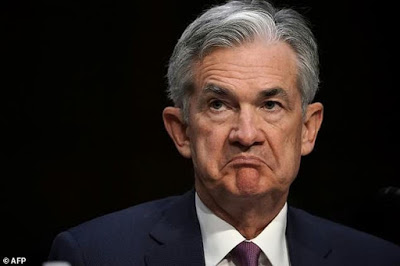by Brian S. Wesbury – Chief Economist, Robert Stein, CFA – Deputy Chief Economist, First Trust Portfolios
Normally when we write about public policy – monetary policy, taxes, spending, trade, and regulations – we mainly focus on what we think policymakers will do and the likely effects on the economy or the financial markets. For example, we now think the Fed is on a path to raise rates gradually and persistently throughout 2022, with some possibility of a rate hike of a half a percentage point along the way, as well.
But this is a far cry from what we think the Federal Reserve should do.
The Fed is well behind the curve and – in spite of raising rates by 25 basis points last week – is only getting further behind in its fight against inflation. Yes, a higher target short-term rate is an improvement in policy. But that's because it is falling behind the inflation curve at a slower rate, not because it's actually catching up.
At present, the futures market in federal funds appears split roughly 50/50 on whether the Fed will raise rates by 25 or 50 bp in May. Instead, we think the Fed should raise short-term rates to 2.0% and do it immediately. Like today.
In addition, the Fed should announce that the hurdle for an additional change to rates in the next six months is high and it will reduce its balance sheet by $100 billion per month starting as soon as possible, not only by not rolling over maturing securities but also by outright selling longer-dated securities. That pace would double the peak pace of Quantitative Tightening from the prior cycle back in 2017-19.
No, we are not being cavalier about these suggestions, nor are we making them to get attention. Instead, it's the Fed that's been cavalier about inflation risk and now has the financial markets and economy in a position where we have to obsess over its every move. Consumer prices are up 7.9% in the past year and the year-ago comparison will likely peak somewhere around 9.0% in the next couple of months. The M2 measure of the money supply has grown more than 40% since COVID started and signals persistently high inflation for years to come.
Yes, we are well aware that, the Fed not having prepared the financial markets for a sudden move to 2.0%, there may be some temporary significant losses for some investors, particularly in equities. But, once digested, we think this dramatic move in monetary policy should be good news whether you are a hawk or dove on monetary policy.
If you're a hawk, the attraction is obvious: the Fed is finally on the ball and more likely to get inflation under control. But we also think a dramatic move in policy should appeal to doves. Even the most dovish policymaker at the Fed is forecasting a short-term interest rate of around 2.0% in late 2023 and late 2024 (according to the "dot plot" released last week). Getting to 2.0% more quickly might open the door to staying there (or above) for a shorter amount of time.
It's also important to note that the median policymaker at the Fed expects the short-term interest rate target to average about 2.0% for the next three years. In other words, the Fed would just be placing the short-term rate right about where it'll be anyhow and then taking the next several months to assess where it needs to go next.
We think that after pausing for several months, the Fed would eventually realize it needs to do more. But, if we're right, that means by having swiftly proceeded to 2.0%, the Fed would have less work to do than if it were to gradually meander rates upward over the next several months.
A target rate of 2.0% would not be high by historical standards. It would still be very low relative to current inflation and even low versus the future inflation expectations embedded in the prices of Treasury securities. Raising the short-term rate to 2.0% would not invert the long end of the yield curve; the 10-year Treasury is yielding 2.2% (as of Monday morning).
There is a time and place for gradualism in monetary policy, particularly when the unemployment rate is still above normal or when inflation is only a little above the Fed's long-term target. This is not that time and place. The Fed's monetary policy mistakes of the past two years have accumulated to a point where they equal those of the 1970s. Small policy shocks today will save us from even bigger ones down the road. But it takes intestinal fortitude.
Brian S. Wesbury – Chief Economist
Robert Stein, CFA – Deputy Chief Economist
Click here for a PDF version
Copyright © First Trust Portfolios














